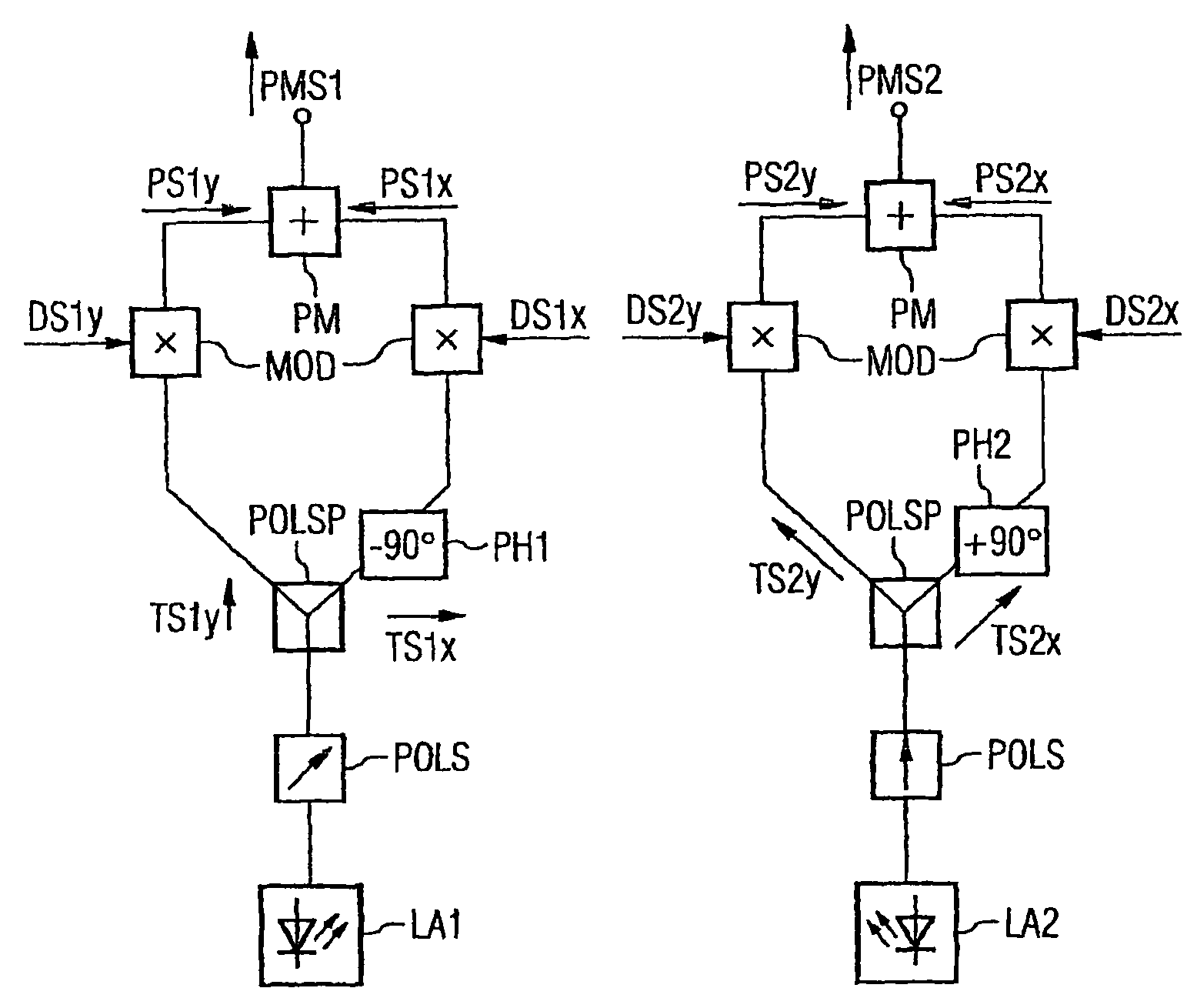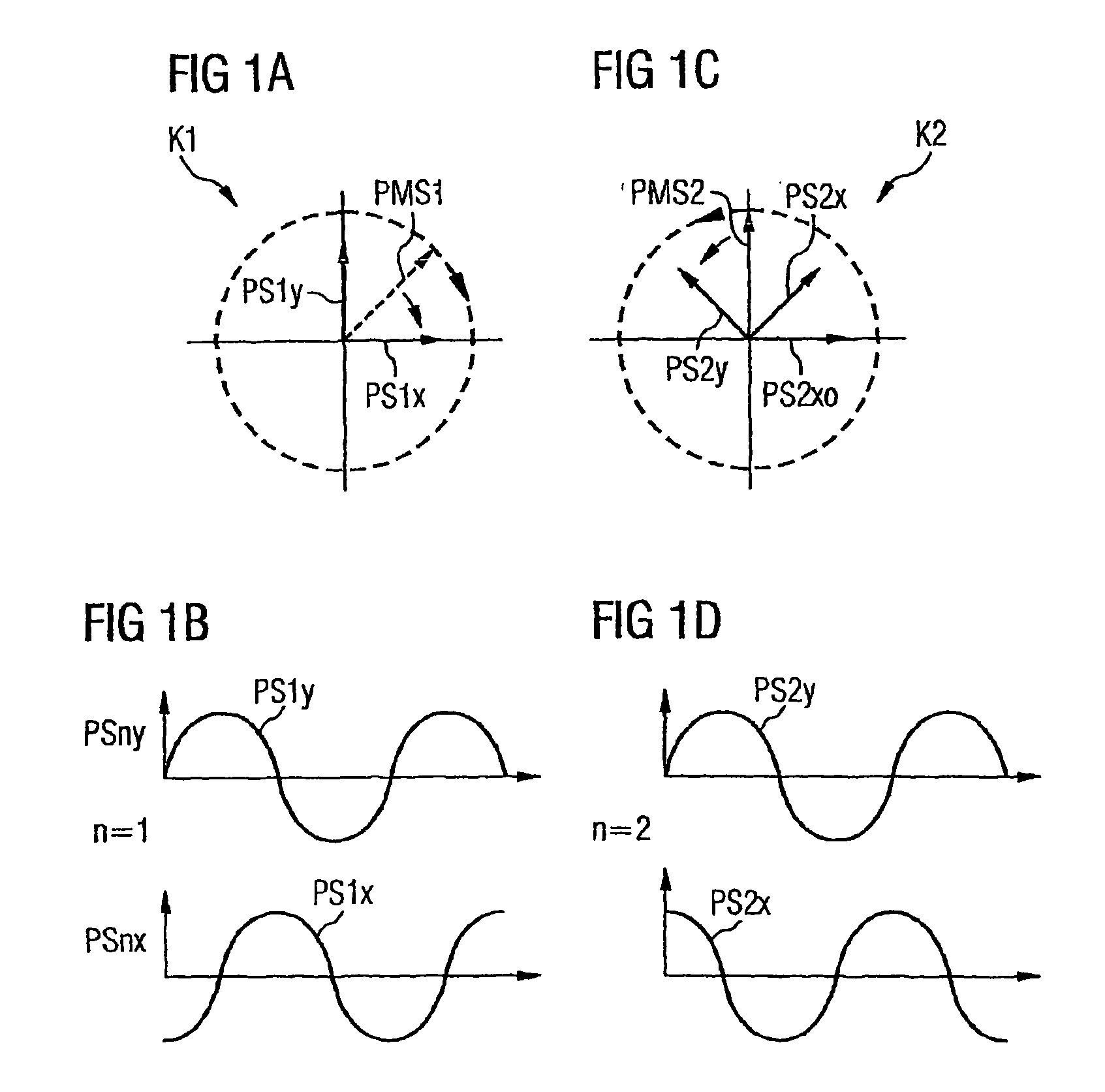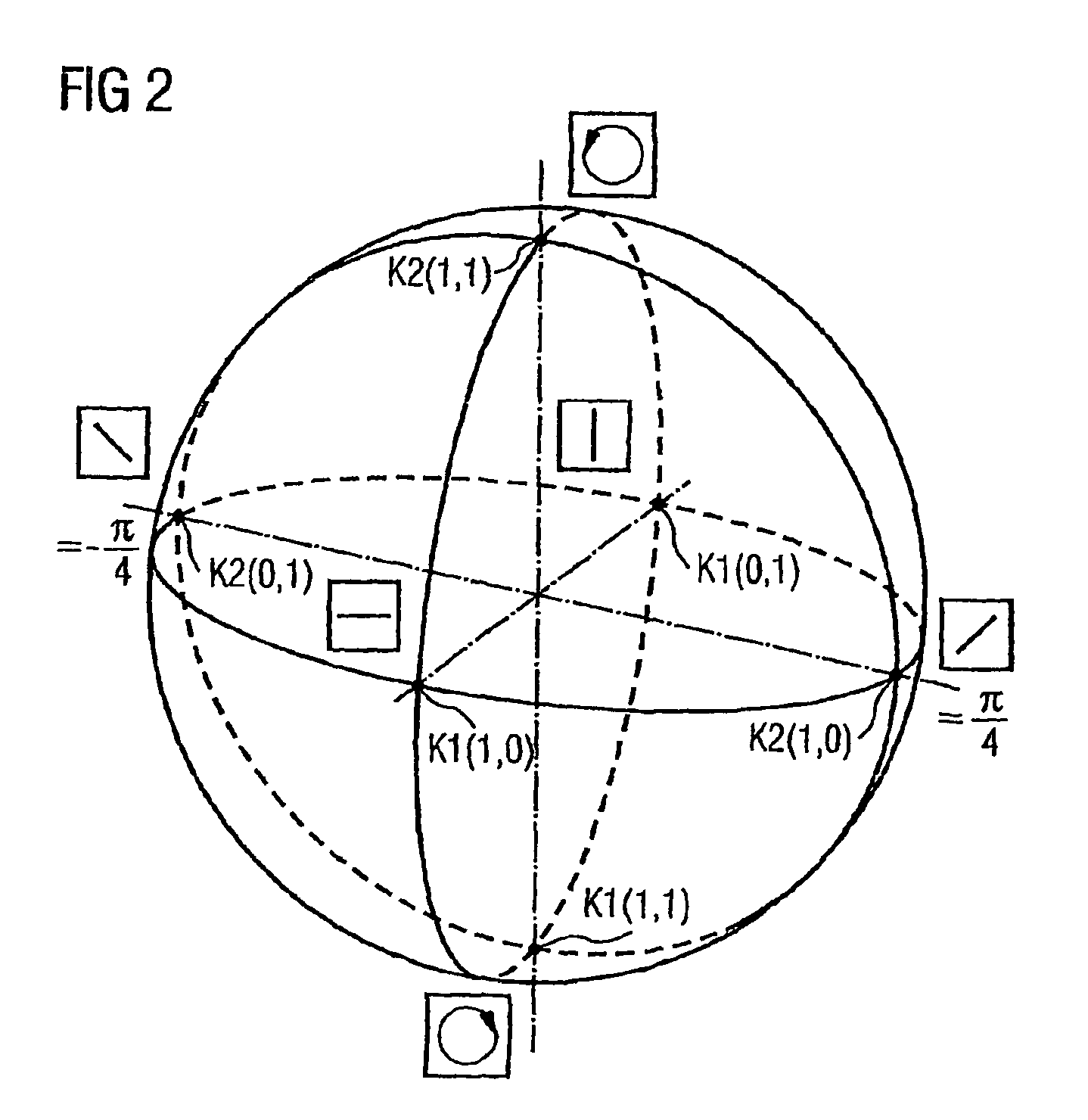Methods for the optical transmission of polarization multiplex signals
- Summary
- Abstract
- Description
- Claims
- Application Information
AI Technical Summary
Benefits of technology
Problems solved by technology
Method used
Image
Examples
Embodiment Construction
[0032]FIG. 1 shows the polarization and phase relationship of two POLMUX signals in adjacent POLMUX channels K1 and K2. The invention is to be described with reference to two adjacent channels, with the same resulting for further channels. Two optical data signals modulated with the logical 1 PS1x and PS1y are transmitted in the first POLMUX channel K1. The snapshot shows the amplitudes of the E-field vectors. The transmission direction in one fiber is perpendicular to the plane of the drawing. The amplitude-modulated data signal PS1x is polarized horizontally here and the amplitude-modulated data signal PS1y is polarized vertically. Both signals also have a mutual phase shift of ±90° between their optical carrier signals (in this instance PS1x −90° for example, FIG. 1b), so that a resulting POLMUX signal PMS1 has a right-hand circular polarization (dashed). The POLMUX signals in further channels of the WDM system are also polarized in a circular manner; as they have different wavel...
PUM
 Login to View More
Login to View More Abstract
Description
Claims
Application Information
 Login to View More
Login to View More - R&D
- Intellectual Property
- Life Sciences
- Materials
- Tech Scout
- Unparalleled Data Quality
- Higher Quality Content
- 60% Fewer Hallucinations
Browse by: Latest US Patents, China's latest patents, Technical Efficacy Thesaurus, Application Domain, Technology Topic, Popular Technical Reports.
© 2025 PatSnap. All rights reserved.Legal|Privacy policy|Modern Slavery Act Transparency Statement|Sitemap|About US| Contact US: help@patsnap.com



